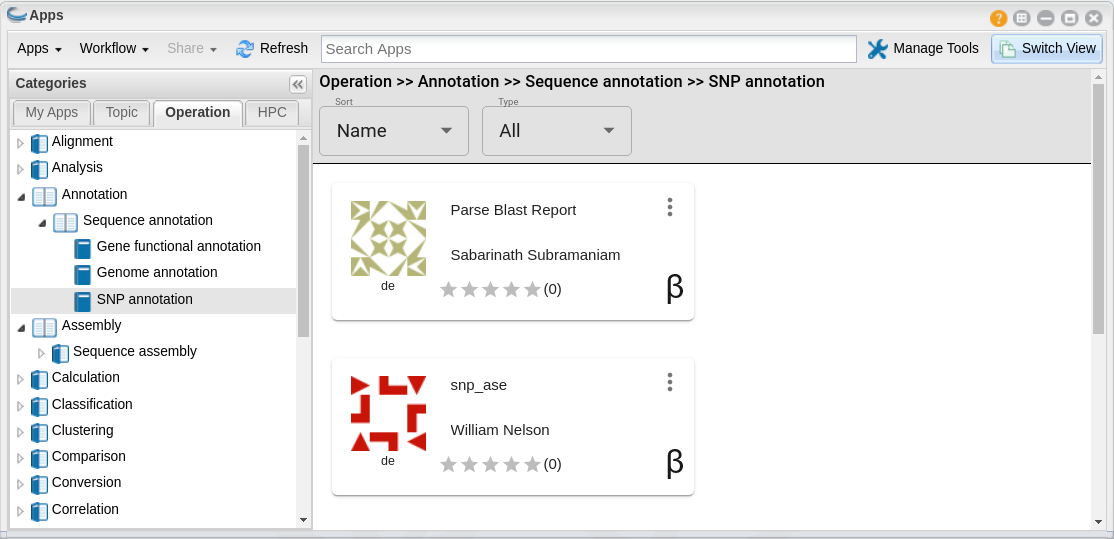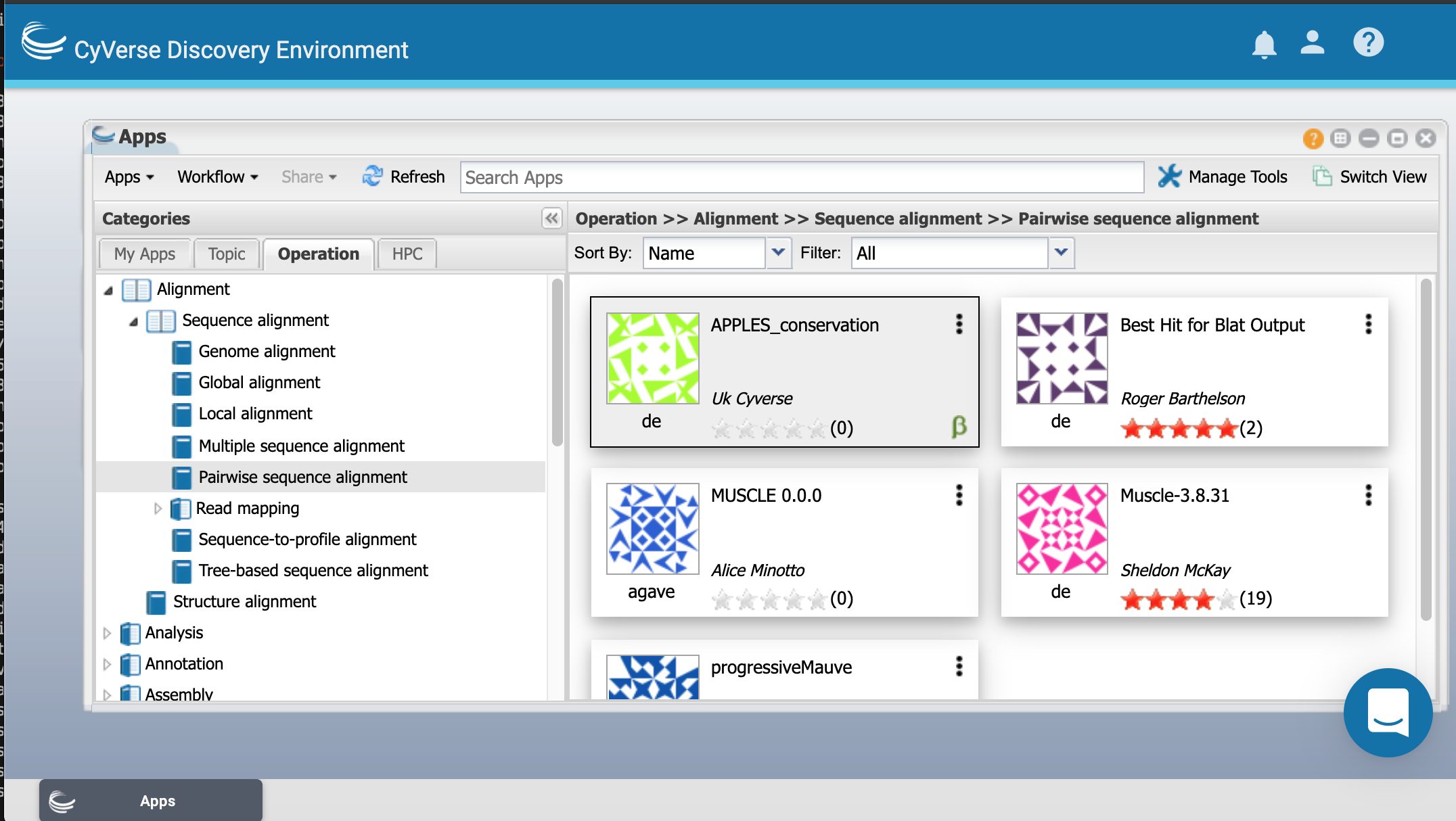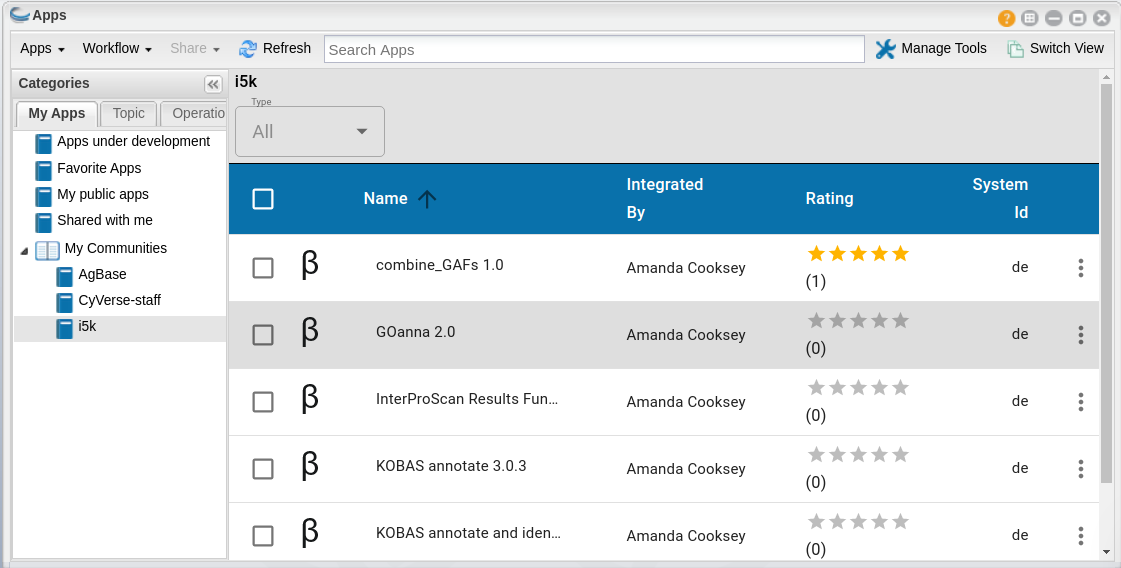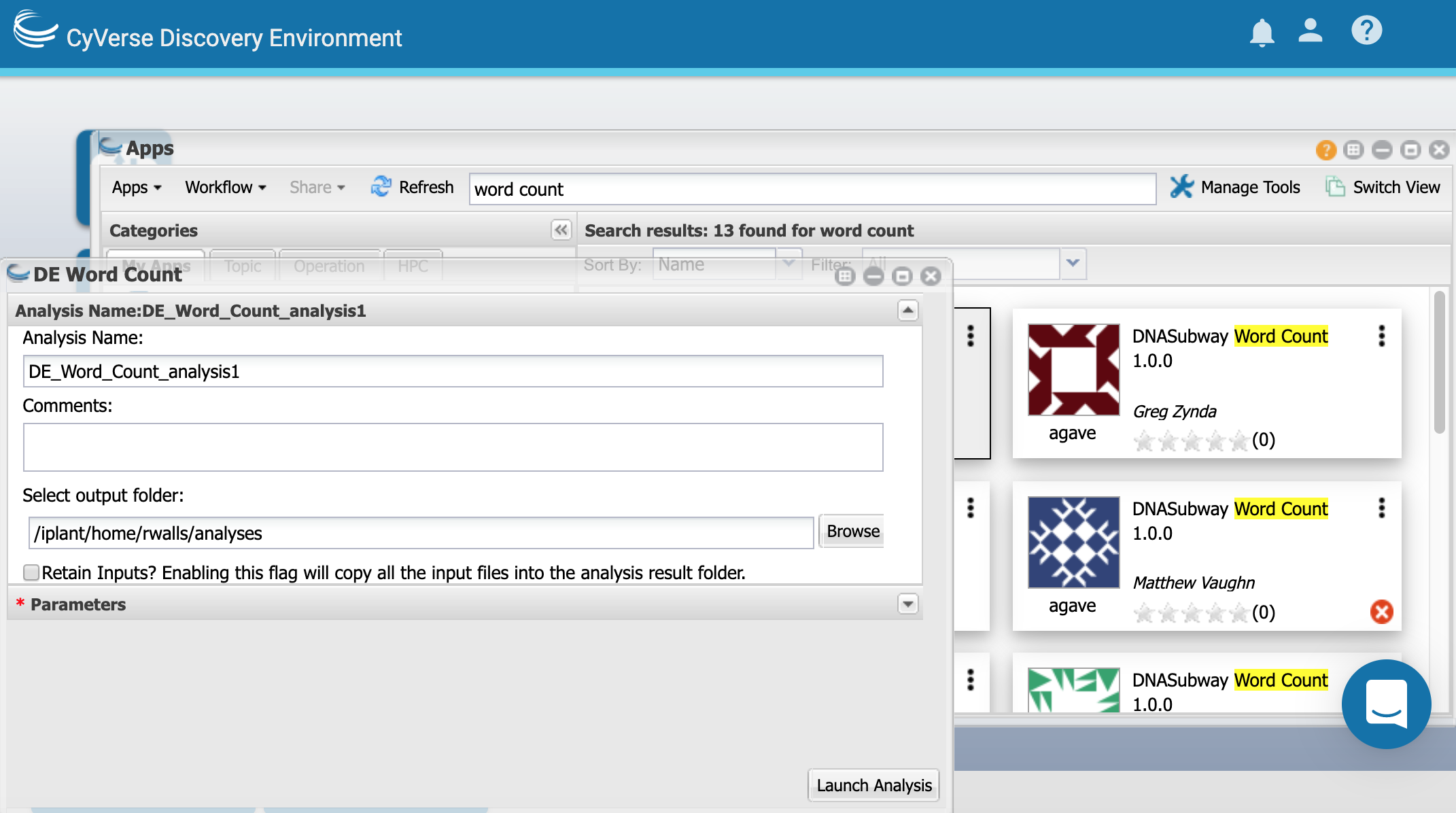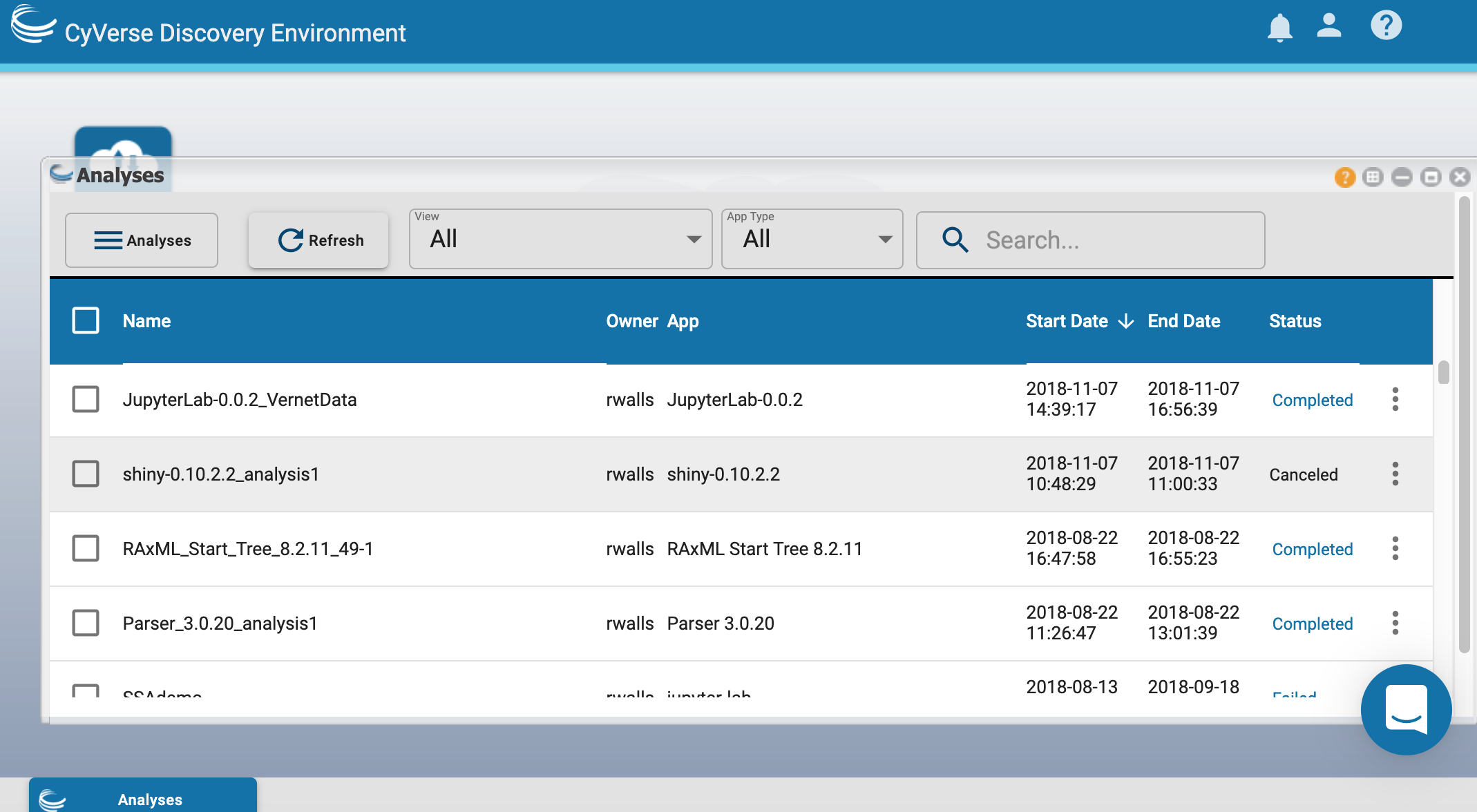Discovery Environment - Data Analysis¶
Why use the DE?¶
- Use hundreds of bioinformatics Apps without the command line
- Executable and interactive modes
- Seamlessly integrated with data and high performance computing – not dependent on your hardware
- Create and publish Apps and workflows so anyone can use them
- Analysis history and provenance – “avoid forensic bioinformatics”
- Securely and easily manage, share, and publish data
Finding Apps¶
When adding new apps to the DE, developers have the option of adding the app to a community. Users can join a community in the ‘communities’ menu under the person icon in the top right corner of the DE window. A new category will then be added to the left pane of the ‘Apps’ window called ‘My Communities’. This can be an easy way to find apps related to a specific project and to see when new apps have been added to that project.
Types of apps¶
Executable: user starts an analysis and when the analysis finishes they can find the output files in their ‘Analyses’ folder
- DE: run locally on our cluster
- HPC: labeled as ‘Agave’ in the DE. Run on XSEDE resources at Texas Advanced Computing Center (TACC)
- OSG: run on the Open Science Grid
Interactive: also called Visual and Interactive Computing Environment (VICE). Allows users to open Integrated Development Environments (IDEs) including RStudio, Project Jupyter and RShiny and work interactively within them.
Analyses window¶
The analysis window provides the status (submitted, running, failed, completed) of each of your analyses.
A variety of information and tasks related to an analysis can be found in the ‘three dots’ menu at the right.
- Relaunch or cancel an analysis
- Troubleshoot an analysis
- Share an analysis with a collaborator.
Launch an interactive analysis (VICE)¶
Visual Interactive Computing Environment VICE introduces graphic user interfaces (GUIs) and common Integrated Development Environments (IDEs) such as Project Jupyter Notebooks & Lab, RStudio, Shiny Apps and Linux Desktop
Additional resources¶
Fix or improve this documentation:
- On Github: Github Repo Link
- Send feedback: Tutorials@CyVerse.org

